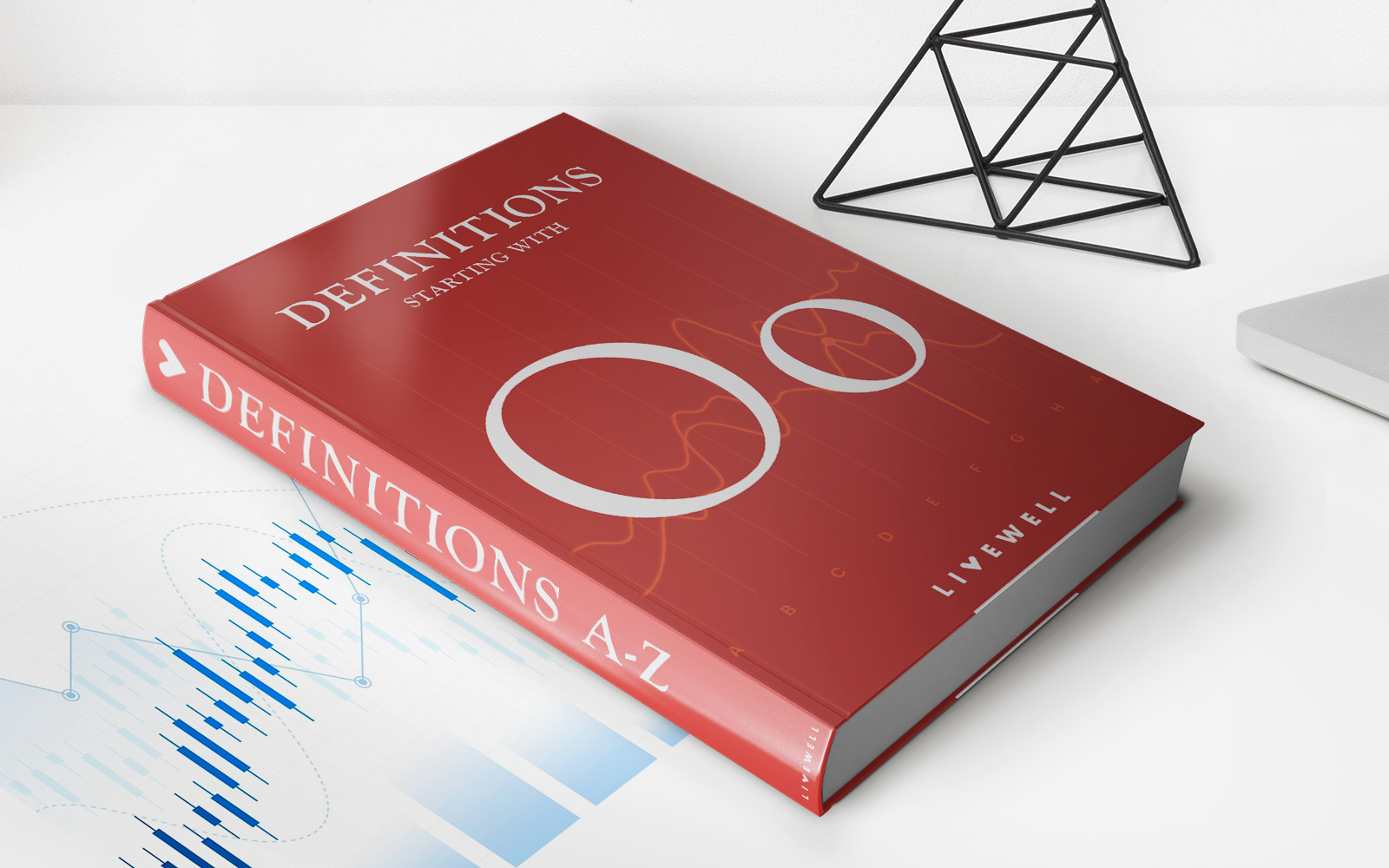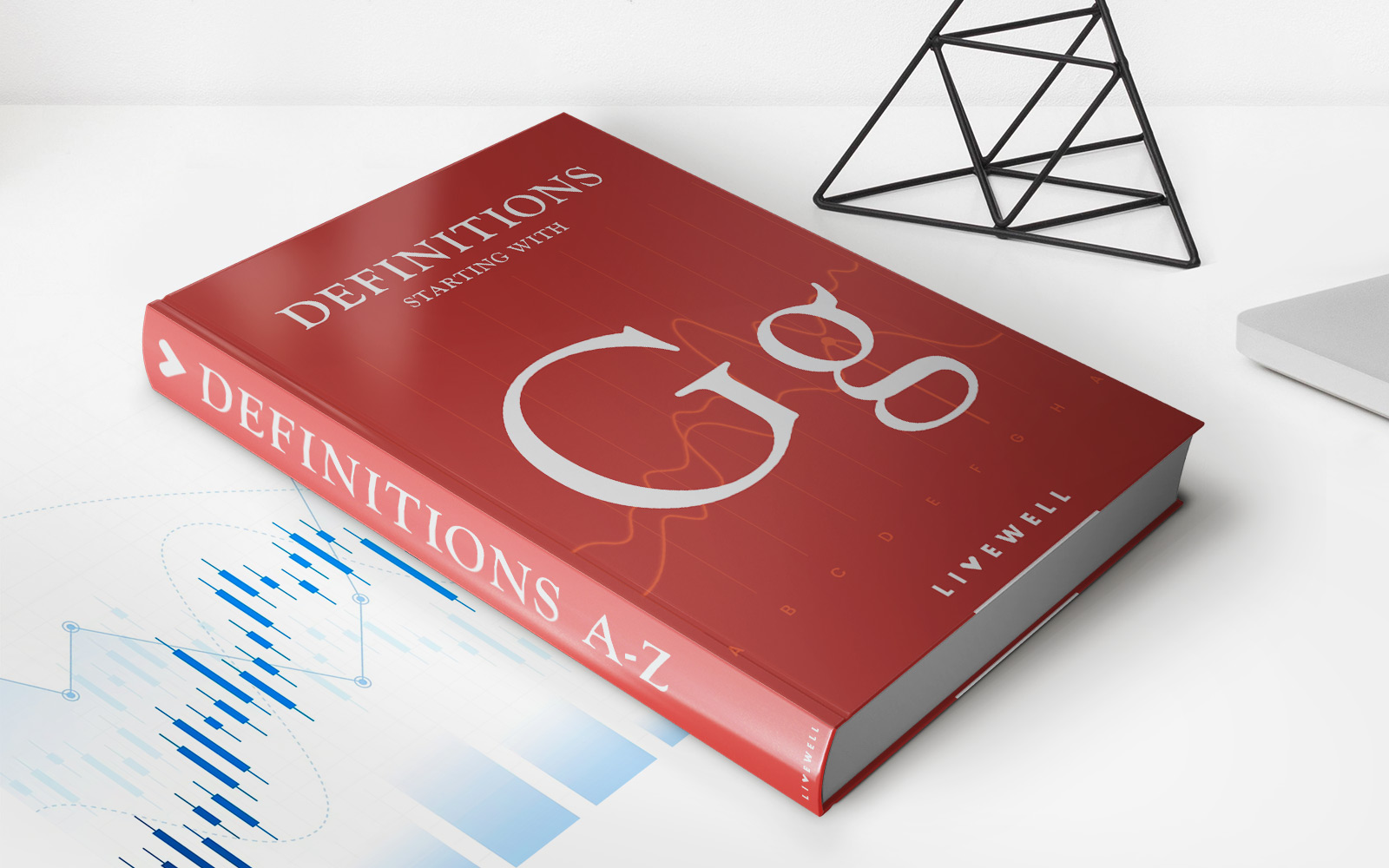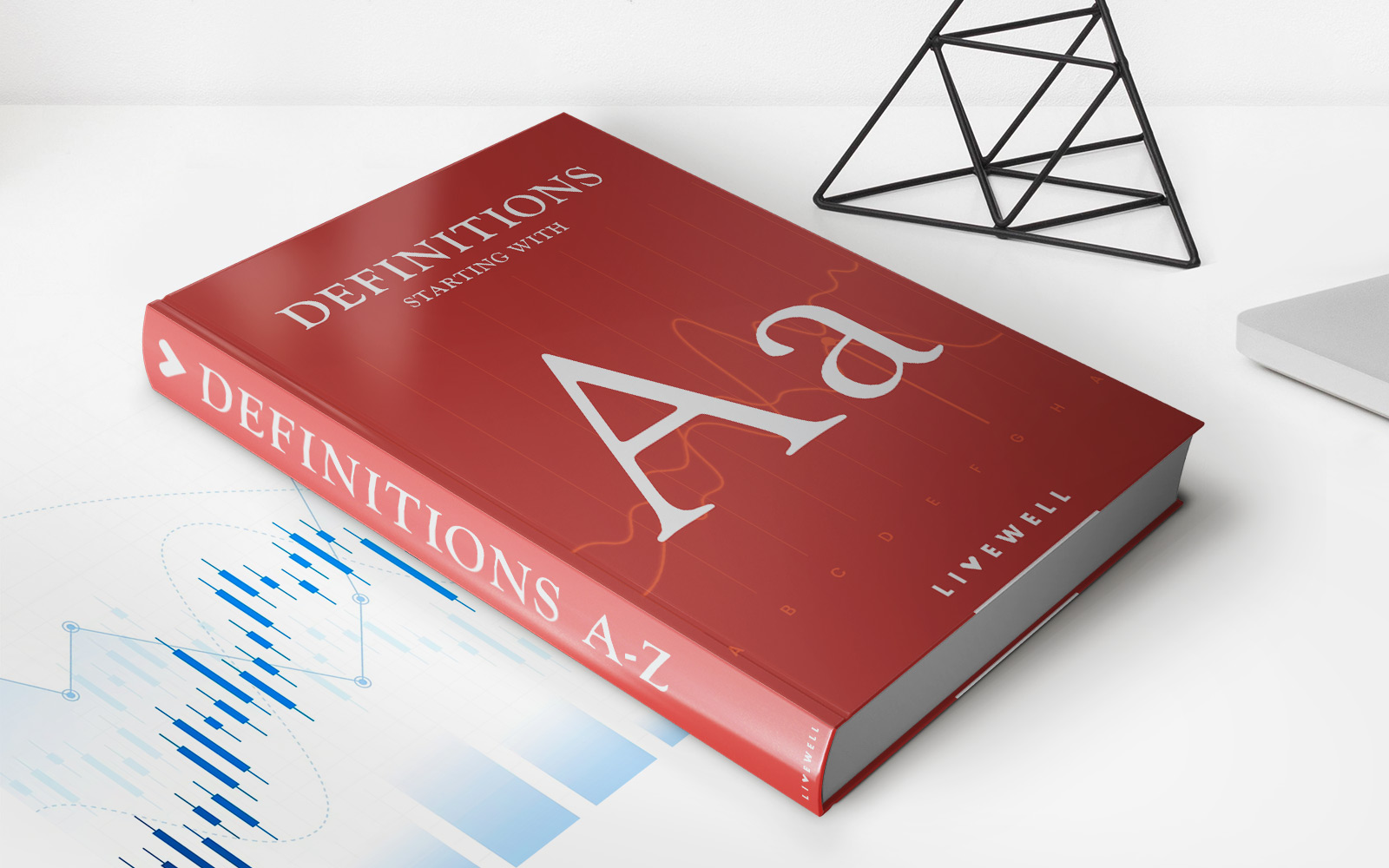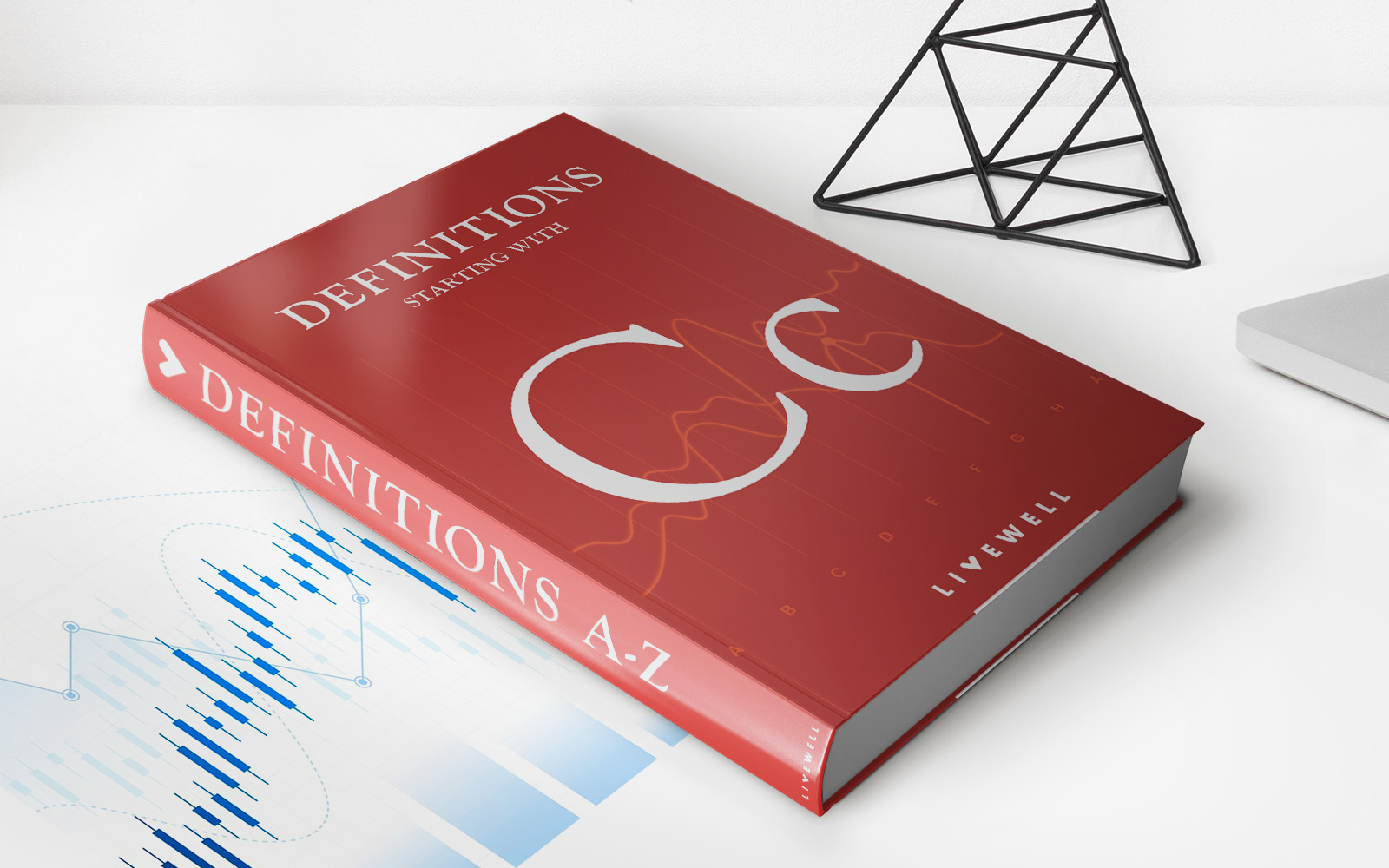

Finance
What Are Office Supplies In Accounting
Modified: December 29, 2023
Learn about the importance of office supplies in accounting and how they impact finance. Discover the essential tools and resources needed for effective financial management.
(Many of the links in this article redirect to a specific reviewed product. Your purchase of these products through affiliate links helps to generate commission for LiveWell, at no extra cost. Learn more)
Table of Contents
- Introduction
- Definition of Office Supplies in Accounting
- Importance of Office Supplies in Accounting
- Categories of Office Supplies in Accounting
- Common Examples of Office Supplies in Accounting
- Accounting Treatment for Office Supplies
- Control and Management of Office Supplies in Accounting
- Recording and Reporting Office Supplies in Accounting
- Conclusion
Introduction
Welcome to the world of accounting, where the meticulous recording and tracking of every financial aspect is crucial to the success of any business. In this realm, even the seemingly small and mundane items hold significant importance, including office supplies. While office supplies may seem insignificant, they play a critical role in maintaining the smooth flow of operations within an organization.
In accounting, office supplies are tangible resources utilized in day-to-day administrative tasks, such as paperwork, record-keeping, and communication. From pens and paper to computers and printers, these supplies are essential for the efficient functioning of an office environment.
While office supplies are typically considered an expense for a business, they are necessary expenses that contribute to the overall productivity and effectiveness of an organization. Proper management and control of office supplies are vital from both a financial and operational standpoint.
In this article, we will delve into the definition and importance of office supplies in accounting, as well as explore the different categories within this realm. We will also discuss common examples of office supplies, their accounting treatment, and best practices for their control and management.
Understanding the significance of office supplies in accounting will not only help businesses optimize their operational efficiency but also ensure accurate financial reporting and analysis.
Definition of Office Supplies in Accounting
In accounting, office supplies refer to the tangible resources and materials that are essential for the day-to-day administrative tasks within an organization. These supplies are utilized for activities such as record-keeping, communication, and other administrative functions.
Office supplies can be classified as consumables, which means they are used up and need to be replenished regularly. They are not intended for resale and are solely meant for internal use within the organization.
Typically, office supplies include a wide range of items, such as pens, pencils, paper, notebooks, folders, staplers, tape, calculators, markers, envelopes, and more. In today’s digital age, office supplies also encompass electronic devices like computers, printers, scanners, and other necessary accessories.
It is important to note that office supplies differ from office equipment, which are typically long-lasting assets with a higher economic value and a longer useful life. Office supplies, on the other hand, are consumed relatively quickly and have a shorter lifespan.
From an accounting perspective, office supplies are considered an expense for the business. These expenses are recorded in the income statement under the category of “Office Supplies Expense” or a similar account.
Properly categorizing and tracking office supplies is crucial for accurate financial reporting and analysis. It allows the organization to monitor and control its expenses, budget effectively, and make informed decisions regarding office supply procurement and usage.
Importance of Office Supplies in Accounting
Despite being seemingly small and insignificant, office supplies play a significant role in the accounting function of an organization. Here are some reasons why office supplies are important in accounting:
1. Efficient Operations: Office supplies are essential for the smooth functioning of administrative tasks within an organization. From paper and pens for note-taking and document creation to computers and printers for producing essential financial reports, these supplies enable employees to perform their job effectively and efficiently.
2. Accuracy in Record-Keeping: Office supplies are necessary for maintaining accurate and organized records, which are crucial for accounting purposes. Items like folders, filing cabinets, and binders help in storing and organizing important documents such as invoices, receipts, and financial statements.
3. Financial Reporting and Analysis: Office supplies contribute to the accurate and timely preparation of financial reports. They are used to record and document various financial transactions, allowing accountants to compile comprehensive financial statements for decision-making and external reporting purposes.
4. Compliance and Audit Requirements: Adequate office supplies are essential for meeting compliance and audit requirements. They enable organizations to maintain proper documentation, which is necessary to demonstrate compliance with regulatory standards and facilitate smooth audits.
5. Cost Control: Efficient management of office supplies can help control costs and optimize spending. By tracking and monitoring the consumption of supplies, businesses can identify areas of excessive usage or potential wastage, leading to better budgeting and cost-saving measures.
6. Productivity Enhancement: The availability of necessary office supplies directly impacts employee productivity. When employees have access to functional equipment, stationery, and other essential supplies, they can work more efficiently, leading to improved overall productivity within the organization.
7. Professionalism and Branding: High-quality office supplies contribute to a professional and well-organized work environment. From branded letterheads and business cards to well-designed presentation materials, these supplies help build a positive brand image and enhance the organization’s reputation.
In summary, office supplies are not mere trivial expenses; they are crucial for the efficient functioning of the accounting function in any organization. By recognizing their importance and allocating resources accordingly, businesses can improve their operational efficiency, financial reporting accuracy, and overall success.
Categories of Office Supplies in Accounting
In accounting, office supplies can be categorized into various groups based on their nature and usage within an organization. Understanding these categories can help businesses effectively manage and track their office supply inventory. Here are some common categories of office supplies:
1. Stationery: This category includes essential items like pens, pencils, erasers, rulers, highlighters, markers, staplers, paper clips, and adhesive tapes. Stationery supplies are used daily for writing, drawing, and organizing documents, making them the backbone of office operations.
2. Paper Products: Paper products encompass items such as printer paper, notebooks, legal pads, sticky notes, envelopes, and folders. These supplies are used for various purposes, such as record-keeping, note-taking, communication, and filing important documents.
3. Computer and Printer Supplies: In the digital age, computer and printer supplies have become crucial office necessities. This category includes ink cartridges, toner, printer paper, USB drives, CD/DVDs, and other accessories that support computer and printer operations.
4. Office Equipment: While office supplies typically refer to consumables, there are certain equipment items that fall under this category. Office equipment includes items like computers, printers, scanners, fax machines, photocopiers, and shredders. Although they have a longer lifespan, these assets are essential for office functions and need to be appropriately categorized and tracked.
5. Communication Tools: Communication tools encompass supplies that facilitate effective internal and external communication. This can include items such as landline phones, mobile phones, headsets, conference room equipment, and postage stamps.
6. Storage and Organization: These supplies assist in maintaining an organized and efficient workspace. This category includes filing cabinets, storage boxes, binders, dividers, trays, and labeling tools, all of which contribute to proper record-keeping and document management.
7. Breakroom Supplies: In addition to office-related supplies, breakroom supplies are essential for employee well-being. Coffee, tea, snacks, cleaning supplies, and disposable items like plates, cups, and utensils all fall under this category.
By categorizing office supplies, businesses can effectively manage their inventory, monitor usage patterns, and streamline procurement processes. It also helps in budgeting, cost control, and identifying areas where usage can be optimized or reduced. Understanding the different categories ensures that all necessary supplies are accounted for and available when needed, enabling smooth operations and efficient workflows within the organization.
Common Examples of Office Supplies in Accounting
Office supplies are an integral part of daily operations in any accounting department. These supplies facilitate the smooth running of administrative tasks as well as the recording and processing of financial transactions. Here are some common examples of office supplies in the field of accounting:
1. Pens and Pencils: Writing instruments like pens and pencils are essential for accountants to record financial information, make calculations, and annotate documents accurately.
2. Paper and Notebooks: Accountants rely on paper and notebooks to record financial transactions, prepare financial statements, and keep detailed records of income, expenses, and other financial data.
3. Calculators and Adding Machines: These devices aid in performing accurate calculations, including addition, subtraction, multiplication, and division. Accountants frequently utilize these tools to ensure precise financial calculations.
4. Computers and Software: In this digital age, computers are indispensable tools for accountants. Specialized accounting software allows accountants to efficiently manage financial data, prepare financial statements, and analyze financial information.
5. Printers and Scanners: Printers and scanners are essential for generating hard copies of financial documents, such as invoices, receipts, and financial reports. Scanners offer the convenience of converting paper documents into digital files for efficient storage and retrieval.
6. Filing Cabinets and Binders: Accountants rely on filing cabinets and binders to store and organize important financial documents, such as bank statements, invoices, tax records, and contracts. These supplies help maintain a systematic and accessible record-keeping system.
7. Staplers, Paper Clips, and Binders: These supplies are used to keep documents securely together and organized. Depending on the size and complexity of projects or financial reports, accountants may require a variety of binding tools.
8. Post-it Notes and Sticky Tabs: These handy supplies are used for marking important information, flagging documents, and leaving reminders for follow-up tasks or key points that require attention.
9. Envelopes and Mailing Supplies: Accountants frequently send out invoices, financial reports, and other important documents to clients, vendors, and government agencies. Envelopes, postage stamps, mailing labels, and other mailing supplies are necessary to ensure secure and timely delivery.
10. Whiteboards and Markers: Whiteboards are useful tools for brainstorming, note-taking, and visualizing financial concepts or project timelines. Markers of various colors allow for easy categorization and differentiation of information.
These examples represent a selection of commonly used office supplies in the field of accounting. The efficient utilization of these supplies helps accountants carry out their duties with accuracy, organization, and productivity. By having access to these essential tools, accounting professionals can effectively manage financial information, prepare reports, and ensure compliance with regulations.
Accounting Treatment for Office Supplies
When it comes to accounting treatment, office supplies are considered as an expense for a business. The way these expenses are recorded and reported depends on the accounting method adopted by the organization, whether it is cash basis or accrual basis accounting.
Cash Basis Accounting:
In cash basis accounting, office supplies are recorded as an expense when they are purchased and paid for. The expense is recognized at the time of cash outflow. For example, if a company purchases paper and pens for $100, it would be recorded as an office supplies expense of $100 when the payment is made.
Accrual Basis Accounting:
Accrual basis accounting requires a more comprehensive approach. Here, office supplies are recorded as an asset when they are acquired, and as an expense when they are consumed or used up. This method ensures more accurate recording of expenses and matches them with the period in which they are incurred, rather than when the payment is made.
Initially, when office supplies are purchased, they are recorded as an asset called “Office Supplies” or “Office Supplies Inventory” on the balance sheet, representing the value of the supplies on hand. As office supplies are used, the cost of supplies consumed is recognized as an expense called “Office Supplies Expense” on the income statement.
Periodic Inventory System:
Under the periodic inventory system, the calculation of office supplies expense is carried out periodically. At the end of the accounting period, a physical count is performed to determine the ending inventory of office supplies. The cost of the supplies used or consumed during the period is then calculated by subtracting the ending inventory from the beginning inventory plus the cost of purchases. This cost is recognized as an expense on the income statement.
Perpetual Inventory System:
The perpetual inventory system provides a more real-time and continuous tracking of office supplies. With this system, the cost of office supplies is recorded as an expense at the time of purchase and simultaneously reduces the inventory balance. Each time supplies are used or consumed, the expense is recognized, and the inventory balance is updated accordingly.
Regardless of the accounting method and inventory system used, it is crucial to accurately monitor and control office supplies to prevent wastage, identify any discrepancies, and ensure that expenses are recorded appropriately. Proper accounting treatment for office supplies enhances financial reporting accuracy, aids in budgeting and cost control, and supports decision-making processes based on reliable and up-to-date financial information.
Control and Management of Office Supplies in Accounting
The control and management of office supplies are essential to ensure efficient operations, cost control, and accurate financial reporting. By employing effective strategies, businesses can mitigate the risk of waste, theft, and misuse of supplies, while optimizing their procurement and usage. Here are some key aspects of controlling and managing office supplies in accounting:
1. Inventory Measurement: Implementing an inventory management system is crucial for tracking office supplies. Regularly measure and record the quantity and value of supplies on hand to determine the value of inventory and identify any discrepancies that may arise.
2. Establishing Usage Policies: Develop clear and concise policies outlining the proper usage of office supplies. Educate employees on the importance of minimizing wastage and encourage responsible consumption. Ensure that proper procedures are in place to request and authorize the use of supplies.
3. Centralized Procurement: Centralizing the procurement process allows for better control and monitoring of office supplies. Establish a centralized purchasing department or designate specific individuals responsible for managing supply orders. This helps maintain consistency, avoid duplication of orders, and negotiate favorable terms with suppliers.
4. Approval Processes: Implement an approval process for the procurement of office supplies. Require appropriate authorization for purchases to ensure that supplies are only acquired when necessary and in line with budgetary constraints.
5. Vendor Evaluation: Evaluate and select vendors carefully. Ensure that they provide quality supplies, competitive pricing, and reliable delivery. Regularly review vendor performance to maintain a reliable supply chain and foster mutually beneficial relationships.
6. Secure Storage: Establish secure storage areas for office supplies to prevent theft and damage. Limit access to authorized personnel only, and consider implementing lockable cabinets or using software programs to track supply usage.
7. Tracking and Reordering: Implement a system to track the usage of office supplies. Monitor inventory levels regularly and establish reorder points to ensure that supplies are replenished before running out. This prevents disruptions to operations and avoids overstocking.
8. Regular Audits: Conduct periodic audits to verify the accuracy of office supply records and identify any discrepancies. Compare physical counts with recorded quantities to assess losses or potential misuse. This helps maintain control and accountability over supplies.
9. Training and Awareness: Provide training and ongoing awareness programs to employees regarding the proper handling and management of office supplies. Emphasize the importance of responsible consumption, cost control, and compliance with company policies.
By implementing effective control and management measures, businesses can ensure the judicious use of office supplies, reduce costs, minimize waste, and maintain accurate records for financial reporting. Proper control and management of office supplies contribute to the overall efficiency, productivity, and financial success of an organization.
Recording and Reporting Office Supplies in Accounting
Accurate recording and reporting of office supplies in accounting are crucial for maintaining transparency and ensuring the financial statements reflect the true financial position of the organization. Here are the key steps involved in recording and reporting office supplies:
1. Purchase and Initial Recognition: When office supplies are purchased, they are initially recorded as an asset on the balance sheet under an account called “Office Supplies” or “Office Supplies Inventory.” The cost of the supplies is recorded, and the corresponding accounts payable or cash account is debited.
2. Usage and Expense Recognition: As office supplies are used or consumed, their cost is recognized as an expense on the income statement. This is typically done at the end of the accounting period or periodically, depending on the inventory system used.
3. Inventory Count: Conduct regular physical inventory counts to determine the value of office supplies still on hand. This count helps reconcile the value of supplies with the balance recorded in the “Office Supplies” or “Office Supplies Inventory” account.
4. Adjustment: Based on the results of the inventory count, make adjusting entries to reflect the accurate value of office supplies on hand. Debit the “Office Supplies Expense” account for the amount of supplies used and credit the “Office Supplies” or “Office Supplies Inventory” account to reduce the balance.
5. Financial Reporting: Include the office supplies expense figure in the income statement under the appropriate expense category, such as “Office Supplies Expense” or “Administrative Expenses.” This provides visibility into the cost of supplies used and helps assess overall operational efficiency.
6. Disclosures: Provide necessary disclosures in the financial statements regarding the accounting policies and procedures followed for recording and reporting office supplies. This ensures transparency and helps stakeholders understand the treatment of office supplies within the financial statements.
7. Internal Controls: Implement robust internal controls to safeguard office supplies and ensure accurate recording and reporting. This includes segregation of duties, proper authorization procedures for procurement, regular reconciliation of physical counts and recorded balances, and periodic audits.
8. Budgeting and Cost Analysis: Utilize recorded office supplies expenses to assess budget performance and control costs. Compare actual expenses with budgeted amounts to identify any significant variances and make informed decisions to manage future procurement and usage.
Accurate recording and reporting of office supplies provide insights into operational efficiency, cost management, and financial performance. By carefully adhering to accounting principles and maintaining proper controls, organizations can ensure the integrity of their financial statements and make informed decisions to optimize the use of office supplies.
Conclusion
Office supplies may seem like small and insignificant items in the realm of accounting, but they play a vital role in the smooth functioning and efficiency of any organization. From pens and paper to computers and printers, these supplies are the backbone of administrative tasks and financial record-keeping.
Understanding the definition and importance of office supplies in accounting allows businesses to recognize their value beyond mere expenses. Proper control and management of office supplies help optimize operational efficiency, cost control, and accurate financial reporting.
By categorizing office supplies, businesses can effectively manage their inventory, monitor usage patterns, and streamline procurement processes. This ensures that the necessary supplies are available when needed, minimizing disruptions and maximizing productivity.
The accounting treatment for office supplies depends on the chosen accounting method, whether cash basis or accrual basis. Regardless of the method, accurately recording and reporting office supplies is essential for financial transparency and compliance.
Businesses should establish strong controls and internal processes to safeguard office supplies, prevent waste, and monitor usage effectively. Regular audits, inventory counts, and adherence to policies and procedures strengthen the control framework and ensure accuracy in financial reporting.
In conclusion, office supplies may be considered trivial in some aspects, but they play a critical role in the accounting function of an organization. Efficient management and control of office supplies contribute to operational efficiency, cost control, and accurate financial reporting. By recognizing the importance of these supplies and implementing effective strategies, businesses can enhance their overall productivity and financial success.














